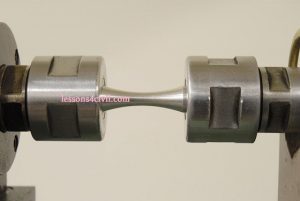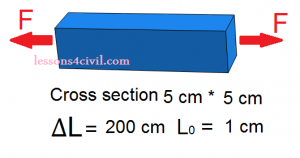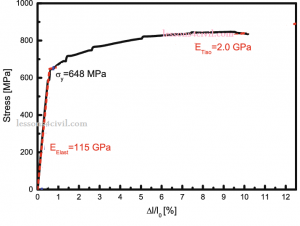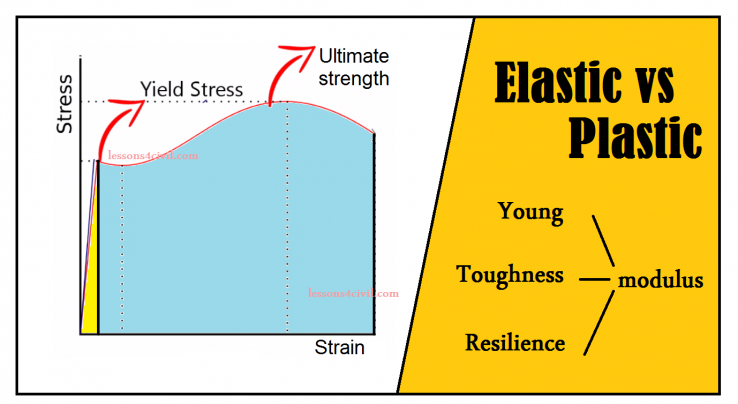Elastic and plastic behaviors
Elastic and plastic behaviors are 2 of those technical terms that might be a bit confusing for some students. In this article I will explain these kinds of terms and for more information I have provided a free video lesson that will highly useful for you.
If we apply small amount of force to a steel bar, it deforms instantly but as soon as it is unloaded, the deformation is gone. In other word small amount of loads cause temporarily deformation which is called elastic deformation. Elastic deformation is always self-reversing.
But if the amount of load is large enough, the deformed bar never reverses to its initial shape. It will deform permanently. This kind of permanent deformation is called plastic deformation..

To quantify the behavior of materials under loading, we usually put their standardized samples under tension or compression tests and record their responses. The ultimate result of this test is the stress-strain curve. This curve is highly informative so let’s have a closer look and extract some its important features.
The figure below is the typical shape of stress-strain curve for steel. Vertical axis is the amount of normal stress, and the horizontal line refers to normal strain. The first part of this curve represents the elastic deformations and if we unload the specimen there is no permanent deformation. within this elastic zone, if we know the amount of stress we can simply calculate the corresponding deformation.
Slop of this line is Elastic modulus. It is also known as Young’s modulus of elasticity, or young modulus.
After a while, as the load increases plastic deformation starts. Plastic deformation is permanent. The minimum amount of stress at which plastic deformations appear is called yield stress.
And the maximum amount of stress that can be tolerated is known as ultimate stress.
The amount of area under elastic zone , is Modulus of Resilience, and it’s the indicator of the amount of energy that can be absorbed by elastic deformations.
Similarly the area under the whole curve is called Modulus of toughness and show us how much energy the specimen can absorb up to the breaking point.
I really suggest you to see the whole of this vide to understand how we use this curve in practical projects. in this video you will also learn about factor of safety and the idea of plastic design. A comparison between brittle and ductile behavior is another section of this video.
There is a question to put this lesson into practice. You can download its pdf version by clicking here.
question: this cubic member has been made from steel and its relevant stress strain curve is illustrated in figure below. culculate the amount of F.





Comments